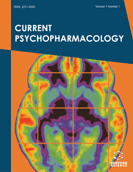Abstract
Positron Emission Tomography (PET) can be used to assess changes of endogenous neurotransmitters induced by pharmacological or physiological challenges and has been successfully applied to the study of the dopaminergic system, and, to a lower extent, to the serotonergic, opioid and cholinergic systems. This review first introduces the principles underlying the assessment of fluctuations of endogenous neurotransmitters with PET and then summarizes the main results obtained for dopamine, with emphasis on clinical studies. The studies of serotonin, opioid peptides, acetylcholine and the few studies dealing with other neurotransmitters (GABA, glutamate) are subsequently reviewed. In conclusion the chances of successfully imaging endogenous neurotransmitters with PET as well as possible trends for the future are discussed.
Keywords: Binding potential (BP), competition model, endogenous neurotransmitter (EN), internalization model, pharmacological challenge, positron emission tomography (PET), serotonin, opioid peptides, acetylcholine, Parkinson's disease, amphetamine, epidepride, methylspiperone, fallypride, Antagonist Tracers
Current Psychopharmacology
Title: Imaging Endogenous Neurotransmitters In Vivo with Positron Emission Tomography Displacement Studies
Volume: 1
Author(s): Giampaolo Tomasi
Affiliation:
Keywords: Binding potential (BP), competition model, endogenous neurotransmitter (EN), internalization model, pharmacological challenge, positron emission tomography (PET), serotonin, opioid peptides, acetylcholine, Parkinson's disease, amphetamine, epidepride, methylspiperone, fallypride, Antagonist Tracers
Abstract: Positron Emission Tomography (PET) can be used to assess changes of endogenous neurotransmitters induced by pharmacological or physiological challenges and has been successfully applied to the study of the dopaminergic system, and, to a lower extent, to the serotonergic, opioid and cholinergic systems. This review first introduces the principles underlying the assessment of fluctuations of endogenous neurotransmitters with PET and then summarizes the main results obtained for dopamine, with emphasis on clinical studies. The studies of serotonin, opioid peptides, acetylcholine and the few studies dealing with other neurotransmitters (GABA, glutamate) are subsequently reviewed. In conclusion the chances of successfully imaging endogenous neurotransmitters with PET as well as possible trends for the future are discussed.
Export Options
About this article
Cite this article as:
Tomasi Giampaolo, Imaging Endogenous Neurotransmitters In Vivo with Positron Emission Tomography Displacement Studies, Current Psychopharmacology 2012; 1 (1) . https://dx.doi.org/10.2174/2211556011201010029
| DOI https://dx.doi.org/10.2174/2211556011201010029 |
Print ISSN 2211-5560 |
| Publisher Name Bentham Science Publisher |
Online ISSN 2211-5579 |
 33
33
- Author Guidelines
- Bentham Author Support Services (BASS)
- Graphical Abstracts
- Fabricating and Stating False Information
- Research Misconduct
- Post Publication Discussions and Corrections
- Publishing Ethics and Rectitude
- Increase Visibility of Your Article
- Archiving Policies
- Peer Review Workflow
- Order Your Article Before Print
- Promote Your Article
- Manuscript Transfer Facility
- Editorial Policies
- Allegations from Whistleblowers
- Announcements
Related Articles
-
Smad-Signaling in Mammary Gland Development and Tumorigenesis
Current Signal Transduction Therapy Dietary and Plant Polyphenols Exert Neuroprotective Effects and Improve Cognitive Function in Cerebral Ischemia
Recent Patents on Food, Nutrition & Agriculture Renaissance of the Biologically Active Vitamin A Derivatives: Established and Novel Directed Therapies for Cancer and Chemoprevention
Current Pharmaceutical Design Cell Cycle and Cancer: The G1 Restriction Point and the G1 / S Transition
Current Genomics Adenovirus-Based Cancer Gene Therapy
Current Gene Therapy Recurrence in Bladder Cancer: A Molecular Dead End?
Current Genomics Editorial (Thematic Issue: Induced Pluripotent Stem Cells (iPSCs) in the Gastroenterology and Hepatology: from Basic Research to Clinical Applications)
Current Stem Cell Research & Therapy Estrogen-Induced Genetic Alterations and Their Role in Carcinogenicity
Current Genomics Signal Transduction and Photodynamic Therapy
Current Signal Transduction Therapy Modern drug delivery systems for targeting the posterior segment of the eye
Current Pharmaceutical Design Nano-pharmaceutical Formulations for Targeted Drug Delivery against HER2 in Breast Cancer
Current Cancer Drug Targets C-Abl Tyrosine Kinase Signaling: A New Player in AD Tau Pathology
Current Alzheimer Research CXCR4 and Glioblastoma
Anti-Cancer Agents in Medicinal Chemistry Phosphoprotein Phosphatase 1 Complexes in Spermatogenesis
Current Molecular Pharmacology Advances in Molecular Therapeutic Approaches to Patients with Malignant Gliomas
Current Signal Transduction Therapy Therapeutics Based on microRNA: A New Approach for Liver Cancer
Current Genomics A Comprehensive Overview of Colon Cancer- A Grim Reaper of the 21st Century
Current Medicinal Chemistry Gap Junctions as Targets for Cancer Chemoprevention and Chemotherapy
Current Drug Targets Current or New Cytomegalovirus Antivirals and Novel Animal Model Strategies
Inflammation & Allergy - Drug Targets (Discontinued) A Dual Role of Cyclin E in Cell Proliferation and Apotosis May Provide a Target for Cancer Therapy
Current Cancer Drug Targets


























